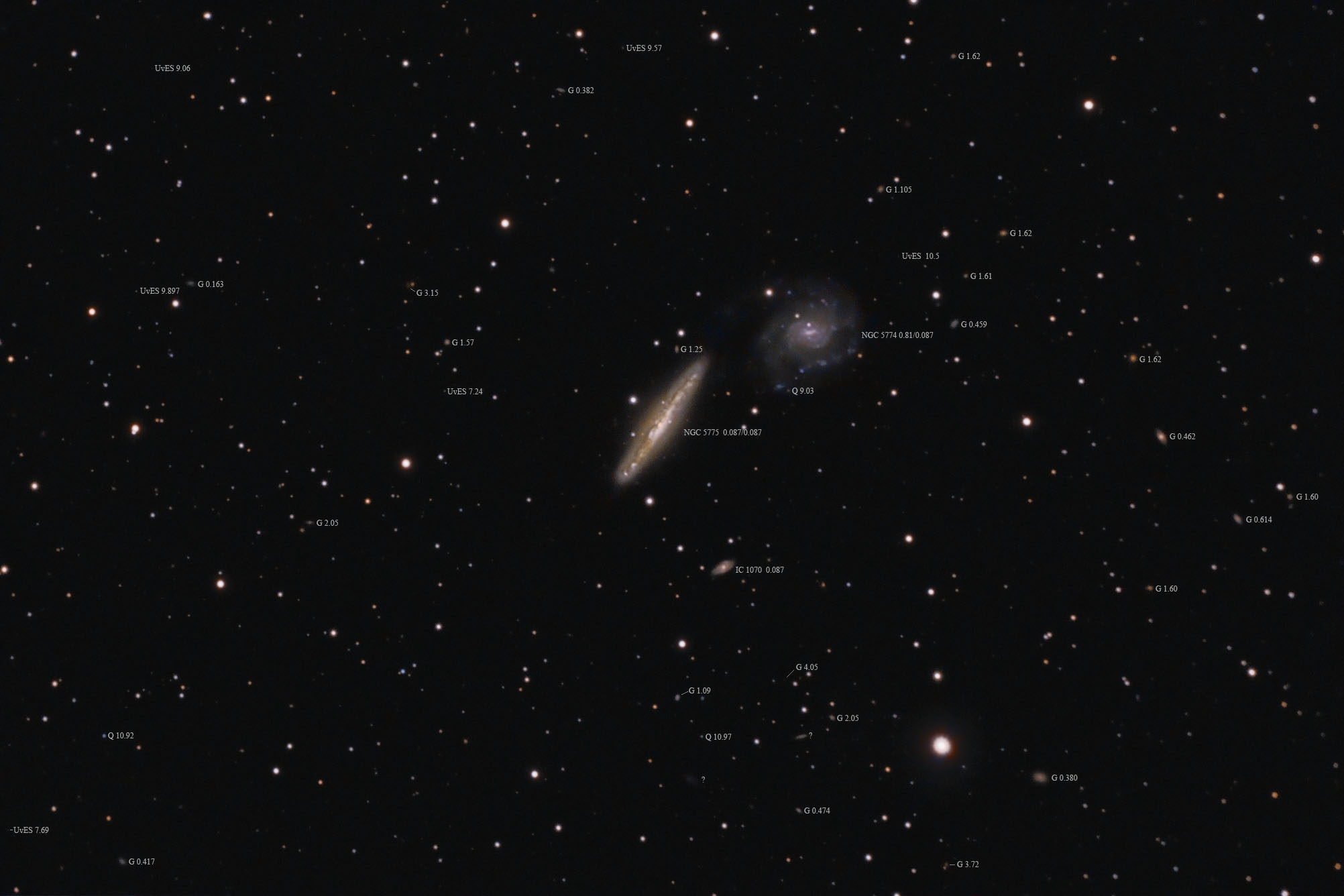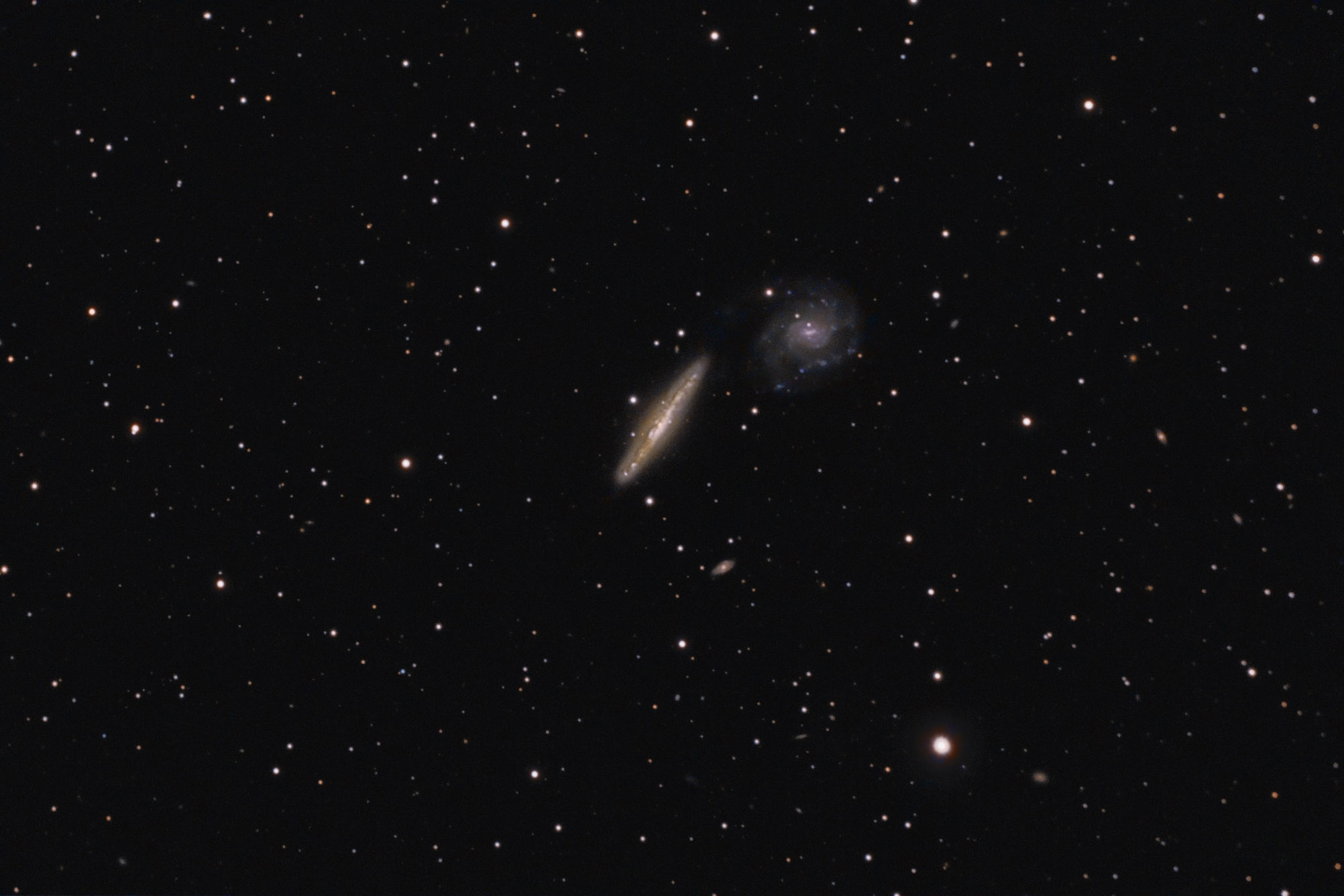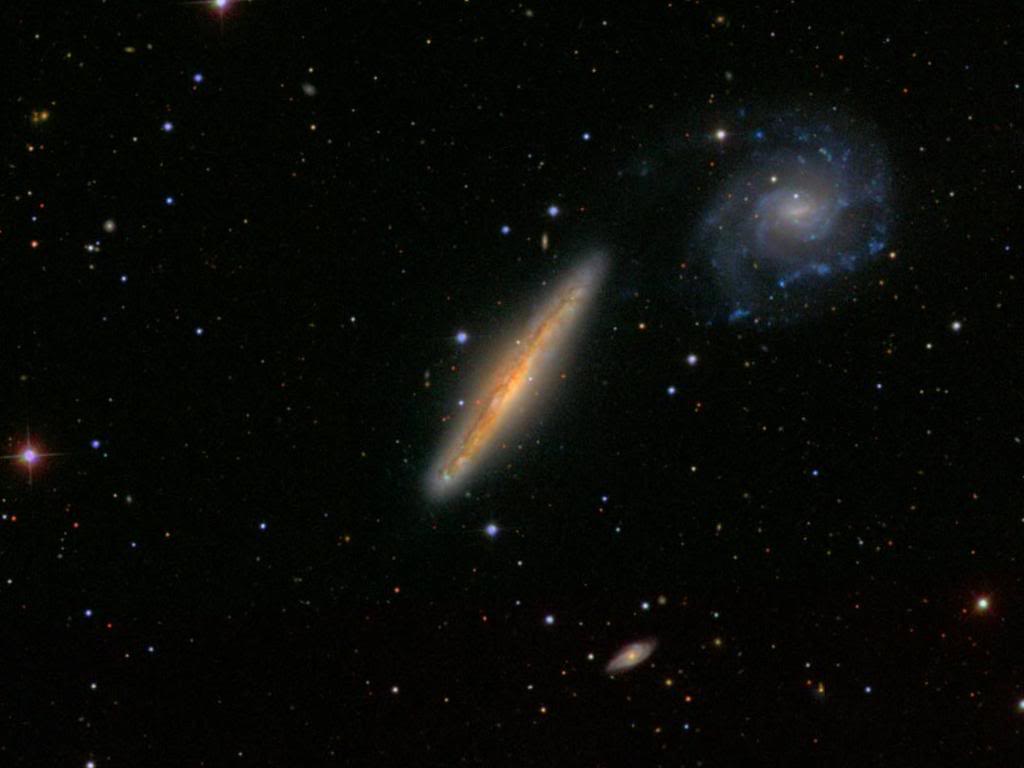| Description | Images |
Object name: NGC5774Designation(s): NGC5774, NGC5775, NGC 5774 and NGC 5775 are a pair of interacting galaxies in Virgo. Papers from 50 years ago considered them non-interacting, an opinion that has changed over the years. NGC 5774 is the blue spiral. It is classed as SAB(rs)d by NED and SBcd by the NGC Project. Redshift puts it 81 million light-years away while Tully-Fisher measurements say 87 million light-years. NGC 5775 is the near edge-on disk galaxy. It is classed as SBc? one place at NED and Sb(f) another. The (f) classification just means it is seen edge-on (not that it is flat as some web pages claim. The NGC Project classes it as SBc without the question mark. Redshift measurements put it about 87 million light-years away. Tully-Fisher measurement agrees. In any case, it and NGC 5774 must be at the same distance to show the interaction seen. I used redshift data for consistency in the annotated image but also show the Tully-Fisher estimate as well. I've not done that before on an annotated image. (Edit: I now do that on all annotated images when available at NED.) Related Designation(s):2MASX J14534275+0334560, 2MASX J14535765+0332401, 2MFGC 12067, 87GB 145128.1+034502, 87GB[BWE91] 1451+0345, AKARI J1453571+033240, ASK 101741.0, ASK 101747.0, CGCG 048-057, CGCG 048-060, CGCG 1451.1+0347, CGCG 1451.5+0345, CXOU J145342.77+033503.2, HDCE 0891 NED004, HDCE 0891 NED005, HIPASS J1453+03, HIR J1453+0333, HOLM 685A, HOLM 685B, IRAS 14511+0347, IRAS 14514+0344, IRAS F14514+0344, KPG 440A, KPG 440B, KUG 1451+037, LDCE 1076 NED031, LDCE 1076 NED032, LGG 387:[G93] 003, LGG 387:[G93] 004, MCG +01-38-013, MCG +01-38-014, MG1 J145359+0331, NGC 5774, NGC 5775, NGC5774, NGC5775, NSA 145682, NSA 165766, PGC 053231, PGC 053247, SDSS J145342.46+033456.9, SDSS J145342.46+033457.0, SDSS J145342.46+033457.2, SDSS J145342.47+033457.0, SDSS J145357.59+033239.7, SDSS J145357.59+033240.0, SDSS J145357.61+033240.0, SDSS J145357.62+033240.1, TXS 1451+037, UGC 09576, UGC 09579, USGC U665 NED01, USGC U665 NED03, UZC J145342.6+033459, UZC J145357.5+033242, UZC-CG 230 NED03, UZC-CG 230 NED05, WBL 532-001, WBL 532-003, WVFSCC J145350+033624, [M98j] 238 NED04, [M98j] 238 NED05, [WB92] 1451+0345, |
Permanent link: https://images.mantrapskies.com/catalog/NGC/NGC5774-NGC5775/NGC5774-5L9X10RGB2X10-ID.jpg |


